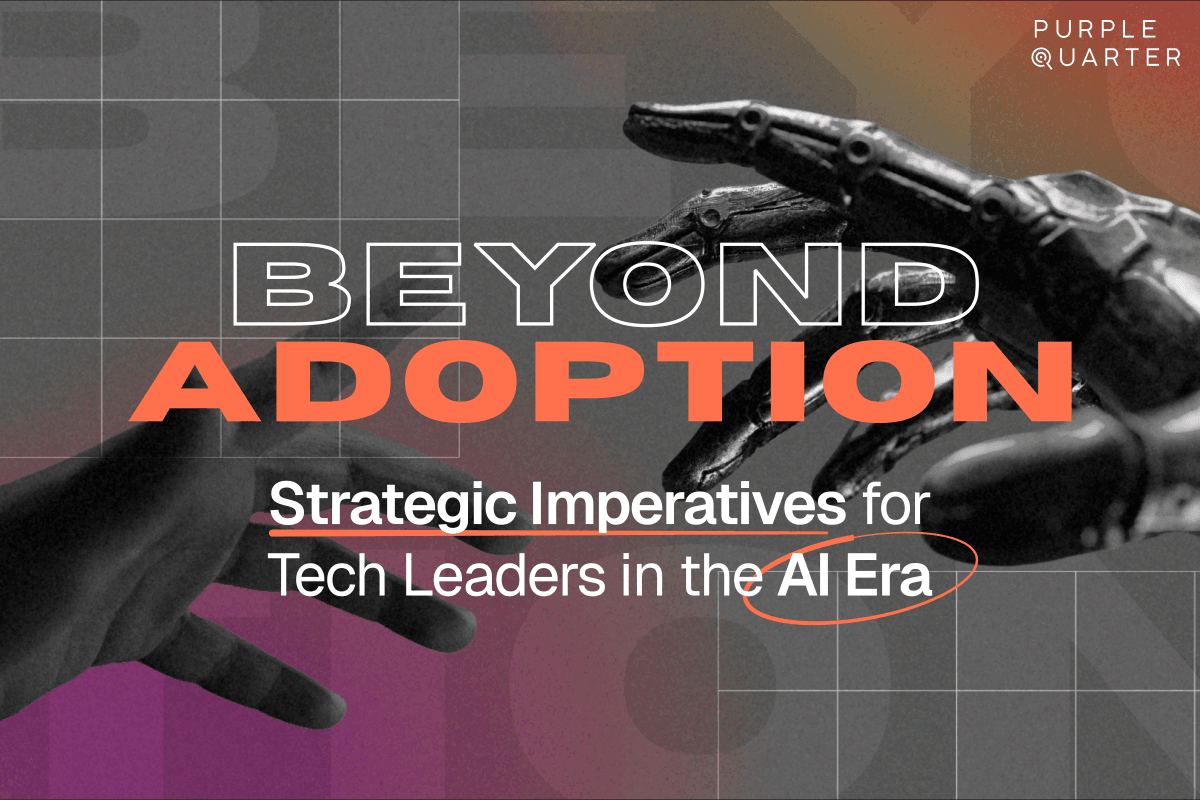
In our earlier piece, The Global AI-fication Wave and What It Means for Tech Ecosystem, we explored the broad shifts AI is driving across global and Indian technology ecosystems, from redefined job descriptions to the rapid emergence of new leadership mandates. We examined how AI is no longer a peripheral enhancement but a central force redrawing product strategies, engineering workflows, and executive expectations. That was the what. This, now, is the how. It is about how organizations must recalibrate their leadership models to not just keep pace with AI, but to shape its role responsibly and strategically. The AI wave is already here. The question now is: who is truly ready to lead through it?
From Technical Managers to AI Visionaries
Today's leaders must consider AI more than a tool for optimization but as a force that can rewire organizational design, change market dynamics, and reshape customer relationships. This requires more than operational excellence. It demands intellectual curiosity, ethical intuition, and strategic imagination. Leaders must also build the connective tissue across departments, enabling engineers, product teams, legal advisors, and ethicists to collaborate. Contrary to the dominant narrative, AI is not confined to Tech alone; it’s inherently cross-functional, and so must be the vision guiding it.
New Core Competencies for AI Leaders
For a modern AI leader to be effective in this new landscape, technical proficiency is the baseline, not the differentiator. What defines them now is their ability to internalise and act on five core domains of competency.
First, a nuanced understanding of AI ethics, governance, and compliance is essential. This includes familiarity with emerging regulatory frameworks such as the EU AI Act, but also the capacity to navigate moral ambiguity where policy is still evolving.
Second, strategic foresight must be part of the leader’s toolkit. AI does not operate in a vacuum. Leaders must anticipate how AI will intersect with their industry’s future, where it will create value, where it may destroy it, and how to guide their organizations through both outcomes.
Third, AI leaders must be able to translate abstract technical capability into concrete business outcomes. This means understanding the economics of AI projects, the latency between investment and return, and how to structure teams and timelines accordingly.
Fourth, the ability to align cross-functional teams around an AI roadmap is vital. Legal, HR, data science, compliance, and engineering must not only be consulted but embedded in AI decision-making.
Fifth, modern leaders must have a strategy for identifying and retaining AI talent. This involves recognizing rare profiles, like those who blend deep technical acumen with an appreciation for human-centered design, and investing in their growth with mentorship and purpose.
Predicting and Preparing for AI-led Role Evolution
We are already seeing the emergence of roles like the Chief AI Ethics Officer, acting as moral compass when dealing with the org’s overall AI strategy, in the process interpreting broad ethical principles and translating them into applied policy. Similarly, a VP of AI Governance and Compliance is no longer a luxury; they are to ensure models are auditable, data is stewarded responsibly, and AI systems are explainable to both regulators and users. Another crucial emerging role is AI Strategy and Innovation Officer where the leader explores AI’s best bet in opening new business lines or disrupting legacy systems before competitors. These roles require individuals who can navigate technology, regulation, ethics, and leadership with equal fluency.
From what we comprehend early on, it isn’t about adding AI to the C-suite, but preparing the C-suite for a future shaped by AI-related advances. For any startup looking to hire AI leader for startup growth, these emerging positions must be considered early on.
Purple Quarter Insight on Identifying and Nurturing AI Leaders
At Purple Quarter, our industry expertise highlights that AI leaders consistently reflect three characteristics that transcend technical capability:
Adaptability is the foremost since AI’s pace isn’t just rapid, it is unpredictable. A successful leader must be willing to revise assumptions, pivot priorities, and integrate new knowledge regularly.
Strategic agility is another.The most effective leaders think beyond projects. They consider how AI interacts with distribution, culture, legal exposure, and competitive advantage. They zoom out when others zoom in.
Lastly, technical literacy remains essential, not because leaders need to build models themselves, but because they must understand enough to question confidently, assess wisely, and lead credibly. To nurture such talent, organizations must go beyond standard executive training. They need tailored AI-focused leadership programs, interdisciplinary mentorship pairings, and a culture that values long-term vision over short-term optimization.
Modernizing Executive Recruitment for AI Roles
AI-era leadership search requires intentional, evidence-based redesign over traditional assessing methods. Hiring for narrative intelligence, ethical discernment, systems thinking, and cross-functional influence has been identified as a priority for many agile and legacy businesses.
A proprietary hiring framework that evaluates potential AI leaders across four integrated dimensions: technical fluency, strategic orientation, ethical depth, and adaptability, is the ultimate necessity, and Purple Quarter has meticulously developed such a framework. Rather than relying on static evaluations, this unique approach contextualizes candidate capabilities against organizational maturity. A leader who is excellent for a Series B company may not be the right fit for a post-IPO firm navigating AI regulation across jurisdictions. We use alignment checks that assess not only what candidates believe about AI, but how those beliefs map onto the company’s stated direction. Behavioral assessments focus on ambiguity tolerance, future-first decision-making, and the capacity to inspire AI-curious teams. In short, we find today’s roles, but for tomorrow’s responsibilities.
As for organizations, they should have clarity in defining hiring criteria explicitly. And candidates too should demonstrate prior success implementing AI strategies with measurable outcomes, or be keen on discourse on rapid and relative AI developments.
Ethical literacy evaluation is a core competency, not a value-add. Scenario-based testing can be quite effective, wherein leaders solve hypothetical dilemmas that mirror reality under constraints. Even the interview questions have to considerably evolve. Asking, “What’s your experience with AI?” is far less valuable than, “How have you aligned AI initiatives with P&L responsibilities?” or “What frameworks do you apply to navigate ethical ambiguity in model deployment?”
These shifts signal a higher standard; one that is overdue, especially in the context of executive search for AI leaders as a specialized discipline in itself.
Closing Thoughts
Eventually, the AI era will need prolific leaders who can harness machines for what they do best, preserve human judgment for what only it can decide, and align the two toward outcomes that benefit both business and society. And those who invest in such leaders today will define the standard for what responsible, visionary leadership looks like in the decades to come.
For more information, please reach out to the Marketing Team.


 (1200 x 800 px).png)